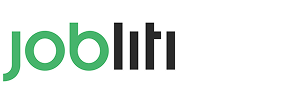How to Land an Ideal Role: A Comprehensive, Actionable Guide

Take Quiz to Find the Right Career for You
Start the Test →What a “Perfect Job” Really Means and Why It Matters
Chasing a role that genuinely fits your strengths isn’t about luck; it’s about clarity, alignment, and repeatable methods. The right position harmonizes what you can do, what you enjoy, and what the market will reward, resulting in energy rather than exhaustion. When you methodically combine self-knowledge with evidence from hiring trends, your search stops feeling random and becomes a targeted campaign.
Defining the ideal day, the outcomes you want to own, and the impact you want to deliver is the foundation for a confident search. With clear criteria, the resolve to find perfect job turns from wishful thinking into a plan you can execute with confidence. The benefits are tangible: faster progress, fewer false starts, and a career narrative that compounds into promotions, autonomy, and fulfillment.
- Reduced trial-and-error because every application supports a well-defined direction.
- Sharper personal brand built on distinctive strengths and credible proof points.
- Higher interview hit-rate from tightly tailored resumes and portfolios.
- Improved satisfaction by aligning values with culture, manager style, and mission.
- Long-term resilience, since a precise target adapts more easily to market changes.
Think of your goal as a design project: specify constraints, test assumptions, and iterate quickly. That mindset keeps momentum high and provides a clear yes/no filter for every opportunity crossing your inbox.
Start with Deep Self-knowledge: Assessments That Actually Help
Before polishing your resume, you need validated insights about your interests, work styles, and natural aptitudes. High-quality assessments reveal patterns you might overlook under pressure, such as your ideal collaboration rhythm or the environments where you learn fastest. When you can articulate those traits, you can target roles that will feel sustainable instead of draining.
Good diagnostics also translate fuzzy preferences into practical guidance you can use in job descriptions and interviews. Many platforms host a find perfect career quiz that translates your interests into role families and skill clusters you can develop deliberately. When you match those outputs to labor-market signals, you’ll identify pathways with both fit and traction.
Interests evolve, so revisit your conclusions every few months as you collect more data from projects and conversations. Some seekers gain clarity by working through a find your perfect job quiz after completing a couple of portfolio pieces or volunteering experiences. The timing matters because recent work samples make your answers precise and actionable.
Not every tool needs a budget, especially when you are in exploration mode. Many early-stage explorers appreciate the availability of a find your perfect career quiz free option to establish a baseline before investing in deeper coaching. Used together with informational interviews, these insights quickly transform uncertainty into a shortlist of promising tracks.
- Cross-check results from multiple assessments to confirm recurring themes.
- Translate traits (e.g., “analytical, proactive”) into actual responsibilities and deliverables.
- Create a hypothesis list of 3–5 role types to investigate through projects and networking.
Map Strengths to Roles and Validate Demand with Real Data
Once you have a directional map, it’s time to synthesize strengths, interests, and market demand into concrete targets. Beyond intuition, you can find perfect career using career tests that merge aptitude data with salary ranges, job postings density, and growth projections to reduce guesswork. The aim is to link capabilities to business outcomes employers prize, such as revenue growth, risk reduction, or customer lifetime value.
To convert insights into action, pair each core strength with roles and proof you can show. The snapshot below helps you frame your positioning during outreach and interviews, while also guiding which projects to prioritize for your portfolio.
| Core Strength | Example Roles | Evidence You Can Show |
|---|---|---|
| Data storytelling | Business Analyst, Product Analyst | Dashboards with before/after KPIs and decision impact |
| User empathy | UX Researcher, Service Designer | Research plans, insights decks, and actionable recommendations |
| Process optimization | Operations Manager, Workflow Engineer | Cycle-time reductions and cost-savings case studies |
| Persuasive writing | Content Strategist, Copywriter | A/B test results and SEO growth for key pages |
After mapping, test your hypotheses with portfolio sprints and short consulting projects. With each completed artifact, you’ll sharpen narratives that make it easier to find your perfect job in a competitive landscape where specificity wins attention. Employers gravitate to candidates who can show measurable outcomes, not just claim generic skills.
Geography and flexibility also matter, especially if you thrive outside traditional office setups. If remote work energizes you, it’s productive to examine platforms and communities that help you find your perfect online job with time-zone alignment and asynchronous collaboration norms. That focus influences how you craft your resume, what tools you highlight, and where you network.
- Quantify results in every project description so hiring teams can infer impact quickly.
- Study job postings for repeated requirements to prioritize learning modules.
- Build a skills matrix to detect gaps and select targeted courses or mentors.
Build a Search System, Strengthen Your Brand, and Apply with Precision
A consistent process beats sporadic bursts of activity. Create a cadence for research, outreach, portfolio updates, and applications so you can measure what works and improve each week. With this rhythm, small daily actions compound into interviews and offers faster than you might expect.
Outreach templates, tailored resumes, and case-forward portfolios form the backbone of your search. With clear positioning, you can methodically find my perfect job by aligning bullet points, project choices, and employer targets to a single theme. That cohesion helps hiring managers understand where you fit within seconds.
Momentum accelerates when you track metrics and refine inputs just like a marketing funnel. Many candidates boost results after reframing their narrative from tasks to outcomes, which turned “I’m searching” into “I’m finding my perfect job by demonstrating value through live prototypes and data.” This shift makes your outreach memorable and credible.
Targeting also improves when you segment opportunities by industry, team maturity, and problem scope. With a curated pipeline and strong proof, it becomes easier to spot and pursue companies where you can truly find perfect jobs that match your growth trajectory. Over time, you’ll rely less on mass applications and more on warm introductions and portfolio-driven conversations.
- Develop a one-page value proposition that links strengths to business outcomes.
- Maintain a tracker for contacts, follow-ups, and interview readiness by role type.
- Ship small, frequent portfolio updates to stay top-of-mind with your network.
- Practice 60-second role-specific pitches to use in intros and screening calls.
Ace Interviews, Evaluate Offers, and Choose With Long-Term Clarity
Interviews reward preparation that mirrors real work. Instead of rehearsing generic answers, build compelling stories around a challenge, the interventions you led, and measurable results, then tailor those stories to the company’s context. Thoughtful questions at the end will surface the team’s expectations and culture, helping you see fit early.
Decision quality increases when you define no-compromise criteria ahead of time and score each offer against them. As you compare options, you’ll better assess whether a particular path will help you find your perfect career by providing the scope, mentorship, and autonomy you need to thrive. This approach prevents shiny-offer syndrome and focuses on sustained progress.
Reflective loops keep your trajectory aligned when new information appears after interviews. If your perspective shifts, it can be useful to revisit a trusted find my perfect career quiz to recalibrate focus and refine your next sprint of applications. Combining fresh insights with concrete market feedback keeps your strategy sharp and adaptive.
- Prepare scorecards covering role scope, manager quality, learning curve, and compensation.
- Negotiate with data: benchmark ranges, your quantified impact, and competing priorities.
- Document your first-90-days plan to signal readiness and clarify expectations.
FAQ: Practical Answers for a Smoother Search
Career moves can feel complex, but a few grounded practices simplify every step. The answers below address common sticking points like narrowing choices, building proof quickly, sustaining motivation, and developing a network that opens real doors. Use them as guardrails while tailoring tactics to your strengths and constraints.
How do I narrow my options without missing opportunities?
Pick three role types that align with your strengths and run two-week experiments for each: targeted applications, two portfolio updates, and five conversations. Compare interview conversion, energy levels, and feedback to choose a lead path and a backup. You’ll move faster by going deep instead of scattering attention across dozens of possibilities.
What should I include in a high-converting resume?
Lead with a crisp summary tying strengths to business outcomes, followed by impact-driven bullets that quantify results. Mirror the language of the posting, spotlight relevant tools, and remove unrelated content that dilutes your signal. Attach a portfolio or case links so reviewers can verify your claims in minutes.
How can I build a portfolio if I lack on-the-job examples?
Create scoped projects that solve real problems for nonprofits, open-source communities, or local businesses. Publish before/after metrics, explain your process, and collect testimonials to validate credibility. Short sprints demonstrate initiative and provide concrete artifacts for interviews.
What’s the best way to network without feeling transactional?
Share useful insights publicly, ask thoughtful questions privately, and always follow up with value like a resource or a concise summary of what you learned. Track relationships in a simple CRM and set reminders for genuine check-ins. Over time, this generosity compounds into referrals and insider context.
How do I stay motivated through rejection?
Treat your search like product iteration: define weekly inputs, review metrics, and adjust hypotheses. Celebrate process milestones, you control portfolio pieces shipped, conversations booked, skills strengthened so progress feels visible. A steady cadence plus measurable wins helps you push through inevitable no’s toward the right yes.
